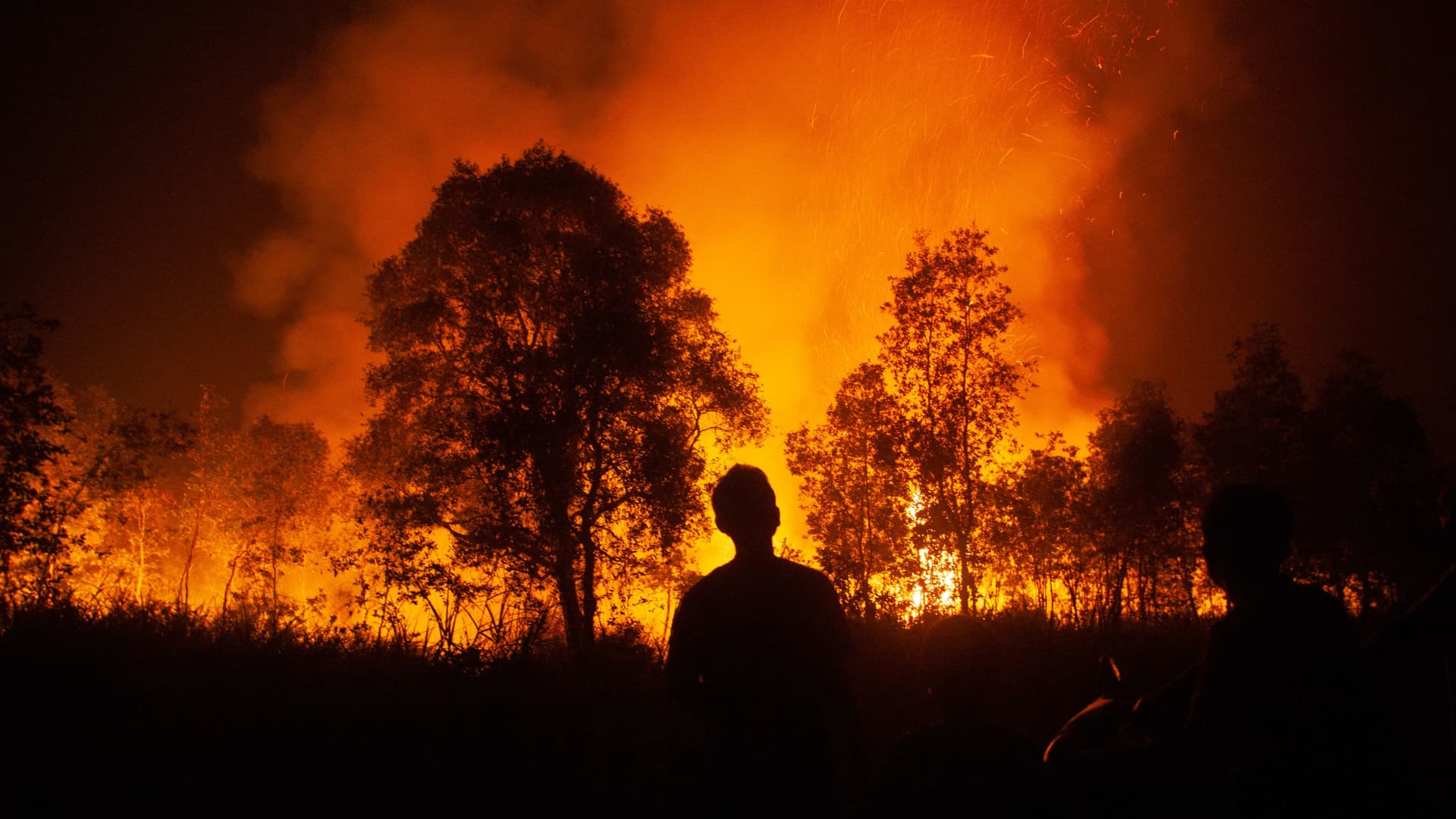
In this photo taken on Oct. 10, 2023, a man looks at a forest fire as it approaches houses in Ogan Ilir, South Sumatra in Indonesia.
Al Zulkifli | AFP | Getty Images
Damage from the global climate crisis has amounted to $391 million per day over the past two decades, a report showed.
Wildfires, heatwaves, droughts and other extreme events attributable to climate change have incurred costs averaging over a hundred billion per year from 2000 to 2019, a recent study published in the journal Nature Communications showed.
“We find that US$143 billion per year of the costs of extreme events is attributable to climatic change. The majority (63%) of this is due to human loss of life,” scientists wrote in the report. The remainder stems from the destruction of property and other assets.
The years with the highest amount of losses were 2008, followed by 2003 and then 2010 — all of which were driven by high mortality events, the research said.
Tropical Cyclone Nargis struck Myanmar in 2008, which took more than 80,000 lives, according to the International Federation of Red Cross and Red Crescent Societies. 2003 saw a severe heatwave across continental Europe which claimed 70,000 lives. In 2010, there was a heatwave in Russia and a drought in Somalia.
A view of a damaged building in a flooded area, following heavy rains, in Prevalje, Slovenia Aug. 6, 2023.
Fedja Grulovic | Reuters
How the losses were derived
The estimates of the losses were calculated by combining the economic data of these losses, along with how much global heating has exacerbated weather events.
The research, however, notes that there is an underestimation of the true costs of climate change due to the difficulty of measuring indirect losses. Examples cited include productivity losses arising from a heatwave, mental health impacts borne by people, or the loss of access to education and jobs if a place of employment is damaged.
Locals watch fire approach the village of Pournari, in the area of Magoula, some 25km southwest of the Greek capital Athens on July 18, 2023.
Spyros Bakalis | AFP | Getty Images
Lack of data from lower-income countries could also add to the underestimation of true costs, the study noted.
The research had also pegged the value of the loss per life at $7.08 million, roughly around the estimates used by the U.S. Federal Emergency Management Agency.
“While the limitations of this approach are significant, this research demonstrates how a more global approximation of the human induced extreme weather event economic costs could be constructed,” the researchers noted.
They called for an increase in adaptation policies to minimize these climate-change attributed costs, such as the building of flood protection or improving early warning signal systems heralding extreme weather events.
Other estimates?
Other organizations have also tried to quantify losses incurred by climate disasters.
The World Meteorological Organization estimated that between 1970 and 2021, there were nearly 12,000 reported climate disasters that resulted in 2 million deaths and economic losses amounting to $4.3 trillion, largely from developing countries.
“The planet is far off track from meeting its climate goals,” the WMO said in a September report, adding that rising global temperatures have been accompanied by more extreme weather.
Search and recovery team members check charred buildings and cars in the aftermath of the Maui wildfires in Lahaina, Hawaii, on August 18, 2023.
Yuki Iwamura | Afp | Getty Images
Governments agreed in the 2015 Paris climate accord to limit global heating to well below 2 degrees Celsius, compared to pre-industrial levels, and pursue efforts to limit the temperature rise to 1.5 degrees Celsius.
But that seems to be a slipping target.
“The chance of the annual mean global near-surface temperature temporarily exceeding 1.5 °C above pre-industrial levels for at least one of the next five years is 66% and is increasing with time,” WMO forecasts.
